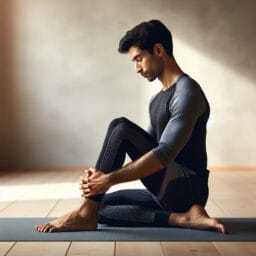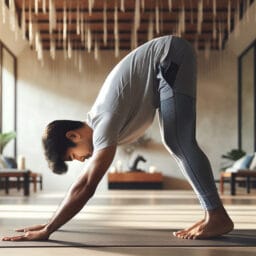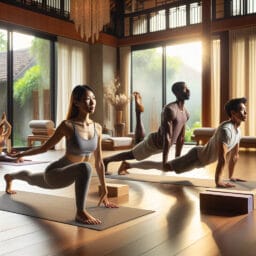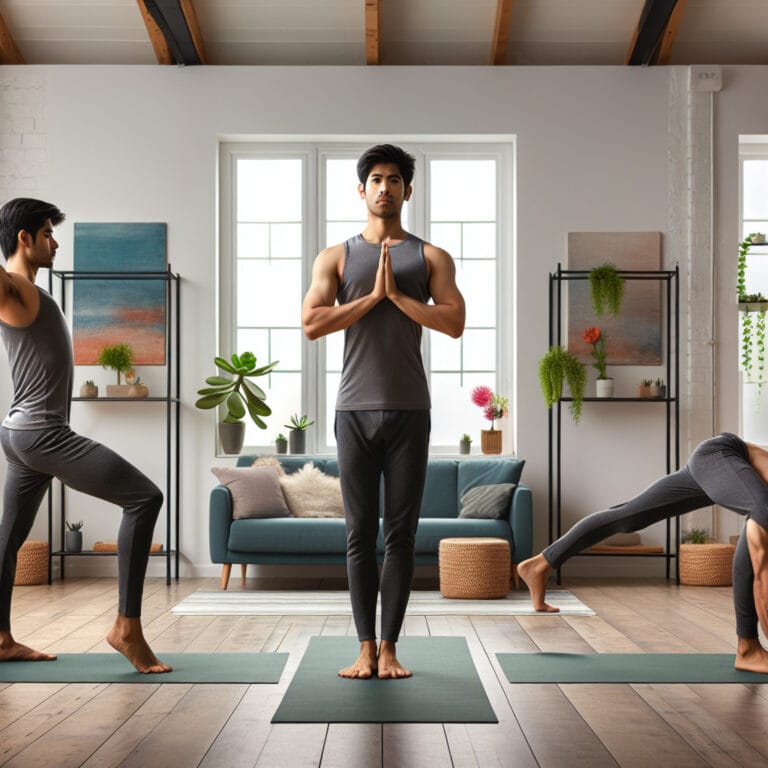
Master the Crescent Lunge in Yoga: A Comprehensive Guide
Table of Contents
- Introduction
- Understanding the Crescent Lunge
- Preparatory Poses for Crescent Lunge
- Step-by-Step Guide to Crescent Lunge
- Common Mistakes in Crescent Lunge
- Modifications and Variations of Crescent Lunge
- Incorporating Crescent Lunge into Your Yoga Practice
- Conclusion
- Frequently Asked Questions
Introduction
Crescent Lunge, often referred to as the high lunge, is a dynamic yoga pose that engages the entire body while promoting balance and strength. This powerful posture not only delivers a deep stretch to the hip flexors and quads but also strengthens the lower body, making it an essential addition to any yoga sequence. When correctly aligned, with your front knee directly above your front ankle protecting your knee joint, and back leg fully extended with a slight backbend in the upper spine – this pose activates every muscle group from your left heel right up to your fingertips. Overstretching or incorrect alignment can lead to strain; therefore, it’s crucial for beginners to use props such as a yoga pad for support or even try modifications like low crescent lunge pose Anjaneyasana before progressing into deeper variations of this pose. Conjoined elegantly with other poses such as Mountain Pose at starting position or transitioning from Downward Facing Dog into Warrior II Pose allows for smooth sequencing in most style and type of yoga practices. Whether you are an athlete looking for muscular endurance or seeking spiritual solace through meditation guided by rhythmic yoga music; integrating Crescent Lunge can greatly enhance both physical prowess and meditative tranquility within one’s practice.
Understanding the Crescent Lunge
The Crescent Lunge, with its roots in the ancient practice of yoga, embodies a striking balance between physical strength and mental tranquility. As a foundation pose, it is instrumental in enhancing muscular endurance and flexibility – making it particularly beneficial for athletes. The pose engages your entire body from your left heel to fingertips, providing a deep stretch to the hip flexors while strengthening the lower body. However, be mindful of incorrect alignment such as overstretching or not engaging the core can lead to strain. Yoga teachers often encourage using props like yoga pads for support until you gain stability and confidence in maintaining proper position. This dynamic pose also opens up possibilities for advanced variations by combining it with other poses like Mountain Pose at starting position or transitioning into Warrior II Pose from Downward Facing Dog – adding depth and versatility to your yoga sequences. It’s worth remembering that integrating crescent lunge into your practice isn’t just about achieving a certain posture; it’s also an invitation to explore meditation guided by rhythmic yoga music promoting overall well-being and spirituality.
Preparatory Poses for Crescent Lunge
The beauty of the Crescent Lunge in yoga lies in its versatility and adaptability. This pose, often used as a transition or starting position, can be seamlessly integrated with other poses like Mountain Pose or Downward Facing Dog, leading into more advanced variations such as Warrior II Pose. The alignment is paramount – it requires the front knee to align directly above the front ankle, protecting your knee joint while your back leg stays fully extended for a deep stretch of your hip flexors and quads. Despite seeming simple, common mistakes include overstretching or not engaging the core properly which could lead to strain, hence beginners are encouraged to use props like yoga pads for support. By moving into this lunge correctly and finalizing the pose with an engaged core and correct spinal extension can immensely benefit yoga practitioners by strengthening their lower body and enhancing balance. It’s no surprise that Crescent Lunge has found its place in type yoga poses libraries globally due to its comprehensive benefits addressing both physical prowess for athletes’ yoga routines and spirituality through meditation guided music practices.
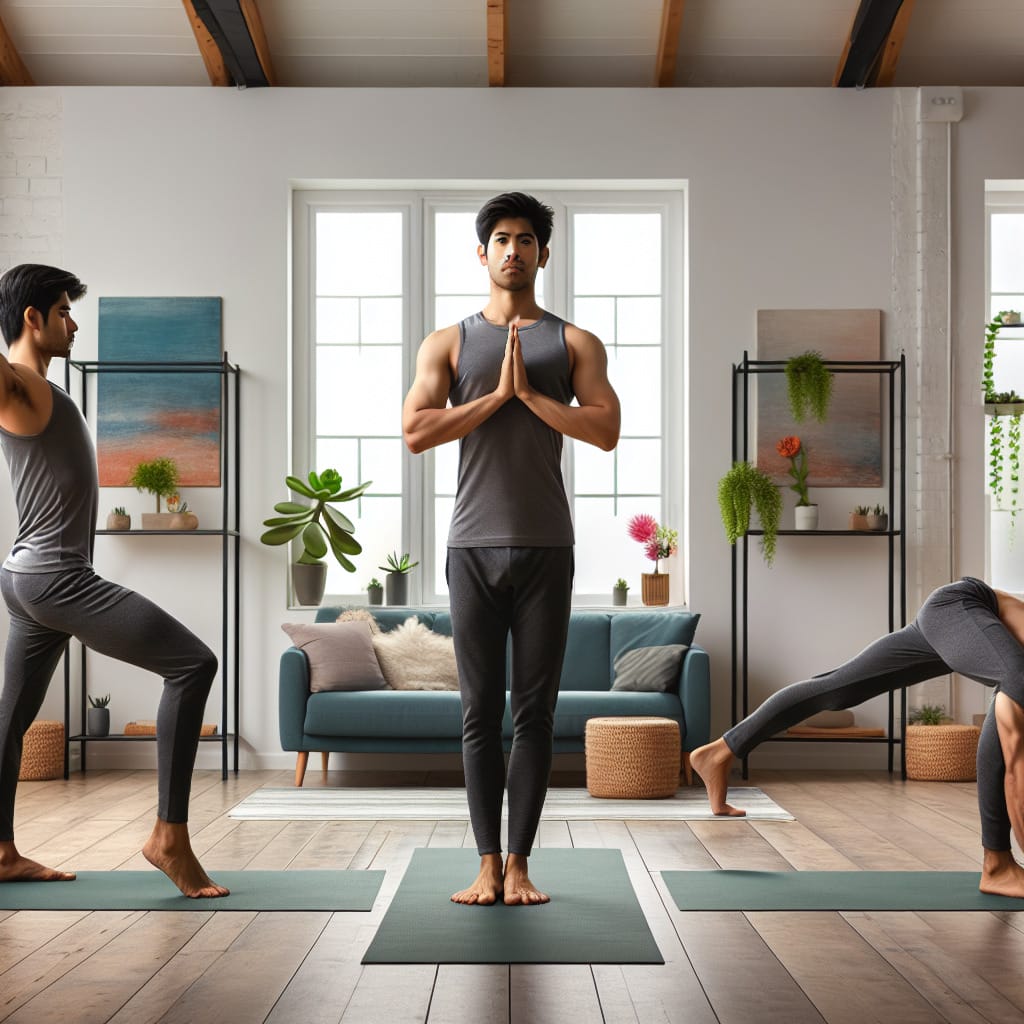
| Key Information | Details |
|---|---|
| Pose Name | Crescent Lunge |
| Integration with other Poses | Mountain Pose, Downward Facing Dog, Warrior II Pose |
| Key Alignment | Front knee aligns directly above the front ankle, back leg stays fully extended |
| Common Mistakes | Overstretching, not engaging the core properly |
| Recommended for Beginners | Use of props like yoga pads for support |
| Benefits | Strengthens lower body, enhances balance, physical prowess for athletes, spirituality through meditation guided music practices |
| Image |  |
Step-by-Step Guide to Crescent Lunge
The Crescent Lunge in yoga, sometimes referred to as the high lunge, is a testament to balance and poise. It begins in the Mountain Pose, with your left foot stepping back into Downward Facing Dog. As you progress into moving towards the lunge, take care not to overstretch – an incorrect alignment that novices often fall prey to. Advancing further, focus on engaging your core while ensuring your front knee aligns with your front ankle – key details that entail correct alignment. Notably, it is common practice for beginners to use props like yoga pads for support during these early stages of learning how to execute this pose efficiently. As you finalize the pose, remember the importance of extending and stretching correctly; this engages muscles ranging from hip flexors right through the entire body delivering an intense quad stretch while activating your groin muscles too – truly a comprehensive workout. Sequencing this pose with other poses such as transitioning from Downward Facing Dog into Warrior II Pose can add depth and variety while also enhancing flow within yoga sequences. This incorporation reflects beautifully in type yoga poses libraries globally due largely because of its twin facets: a physical prowess booster making it ideal for athletes’ yoga routines whilst catering spiritually by promoting meditation guided by rhythmic music offering tranquility – another benefit yoga practitioners relish about crescent lunge amongst others.
Common Mistakes in Crescent Lunge
A common pitfall in executing the Crescent Lunge lies in the misconception of pushing one’s boundaries without understanding the importance of correct alignment. In an enthusiastic bid to deepen the stretch, beginners often put their front knee beyond the ankle, which could lead to unnecessary strain and overstretching. Yoga teachers emphasize maintaining a right angle with your front leg where your knee directly aligns above your front ankle. Simultaneously, extending your back foot so that it’s tippy-toed while keeping a strong and straight back leg is essential. Another area novices tend to overlook is engaging their core throughout this pose; not doing so can lead to instability and loss of balance. It’s important therefore to breathe deeply during each inhalation lift, thus ensuring your upper body remains lifted and core engaged as you delve into this powerful high lunge yoga pose imbued with benefits for both athletes’ yoga routines as well as those seeking spiritual tranquility through meditation guided practices.
Modifications and Variations of Crescent Lunge
There’s a distinct finesse to mastering the Crescent Lunge, one of the key type yoga poses revered in various yoga sequences. It starts with grounding yourself in Mountain Pose, then transitioning smoothly into Downward Facing Dog and finally moving into the lunge. Pivotal to this pose is maintaining correct alignment; ensuring your front knee directly above your front ankle while keeping your back leg fully extended guards against overstretching and unnecessary strain. As you finalize this dynamic pose, you experience an invigorating deep stretch from hip flexors through to your quads – a benefit yoga practitioners appreciate for its dual impact on both body strength and flexibility enhancement. For beginners struggling with balance or that perfect alignment, using props like yoga pads can be immensely helpful until familiarity builds confidence within this crescent high lunge pose. Once mastered, explore advanced variations by combining Crescent Lunge with other poses such as Warrior II Pose – an intersection where flexibility meets strength in one seamless flow within any anatomy yoga sequence style benefits both athletes’ yoga routines and those seeking spiritual tranquility through meditation guided practices.
Incorporating Crescent Lunge into Your Yoga Practice
Integrating Crescent Lunge with other yoga poses and sequences can dramatically enhance your practice, offering a comprehensive blend of strength, balance, and flexibility. Starting in Mountain Pose, transition smoothly into Downward Facing Dog before moving into the high lunge. Maintain correct alignment by keeping your front knee directly above your front ankle while extending the back leg fully. This prevents overstretching and helps engage the entire body from hip flexors up to fingertips. If you’re new to this pose or encounter difficulties with balancing, don’t hesitate to use props such as yoga pads for support. As you gain confidence, explore advanced variations like transitioning into Warrior II Pose from Crescent Lunge for a more dynamic routine that engages multiple muscle groups simultaneously. This combination allows for fluid transitions within various anatomy focused yoga sequences – whether you’re an athlete seeking physical prowess or someone exploring spirituality through meditation guided practices. Despite being physically demanding at times, remember that each deep stretch offers both physiological benefits and mental tranquility – a testament to the holistic impact of this versatile pose.
Conclusion
With its dynamic blend of strength, balance, and flexibility, the Crescent Lunge is a powerhouse pose in yoga that engages the entire body. From starting position in Mountain Pose to moving into the lunge, it’s vital to maintain correct alignment; from placing your front knee directly above your front ankle to extending your back leg fully – every detail matters. Overstretching or not engaging the core can lead to unnecessary strain hence yoga teachers often recommend using props such as yoga pads for beginners. As you finalize this crescent high lunge pose, feel the deep stretch through your hip flexors and quads – a testament to its whole-body engagement. Sequencing it with other poses like Downward Facing Dog or transitioning into Warrior II Pose allows for a fluid flow within various anatomy-focused yoga sequences making this a popular choice in many pose library poses types due to its comprehensive benefits for both athletes’ yoga routines and those seeking spiritual tranquility through meditation guided practices.
Frequently Asked Questions
Q: What is the Crescent Lunge in Yoga?
A: The Crescent Lunge is a foundational yoga pose with numerous benefits. This pose engages various parts of your body and aids in enhancing balance and stability.
Q: What is the history and origin of the Crescent Lunge?
A: The Crescent Lunge, like many yoga poses, has roots in ancient Indian practices. Over time, it has been adapted and grown in popularity due to its many physical and mental benefits.
Q: What are the physical and mental benefits of mastering the Crescent Lunge?
A: The Crescent Lunge strengthens several muscle groups including legs, hips, and core. It also promotes balance and stability. From a mental aspect, it encourages focus, calm, and mindfulness.
Q: Are there any preparatory poses for the Crescent Lunge?
A: Yes, some preparatory poses for the Crescent Lunge include the Mountain Pose, Downward Facing Dog, and Warrior II Pose. These poses help to prepare the body for the movement and balance required in the Crescent Lunge.
Q: Can you detail how to correctly perform the Crescent Lunge?
A: Beginning in a Standing Position, you slowly move into a lunge, ensuring your front knee is aligned over your ankle and back leg is straight. Raise your arms overhead, palms facing each other. Keep your gaze forward, drawing your chest upward as you breathe deeply.
Q: What are some common mistakes in forming the Crescent Lunge?
A: Incorrect alignment, overstretching, and not engaging the core are common mistakes in the Crescent Lunge. These can lead to inadequate benefits from the pose or potential injury.
Q: Are there any modifications or variations for the Crescent Lunge?
A: Yes, props like yoga blocks or straps can be used to modify the Crescent Lunge if necessary. Advanced practitioners can also explore variations such as adding a twist or engaging in a backbend.
Q: How can I incorporate Crescent Lunge into my yoga practice?
A: The Crescent Lunge can be combined with other poses in a sequence for a full-body workout. It can be a good transition pose, centering pose, or even used as a standalone for quick practices.
Q: What is the overall importance of the Crescent Lunge?
A: The Crescent Lunge is a key yoga pose due to its many physical benefits, including strengthening, stretching, and balance improvement. It also encourages mental focus and relaxation, making it a valuable addition to any yoga practice.
